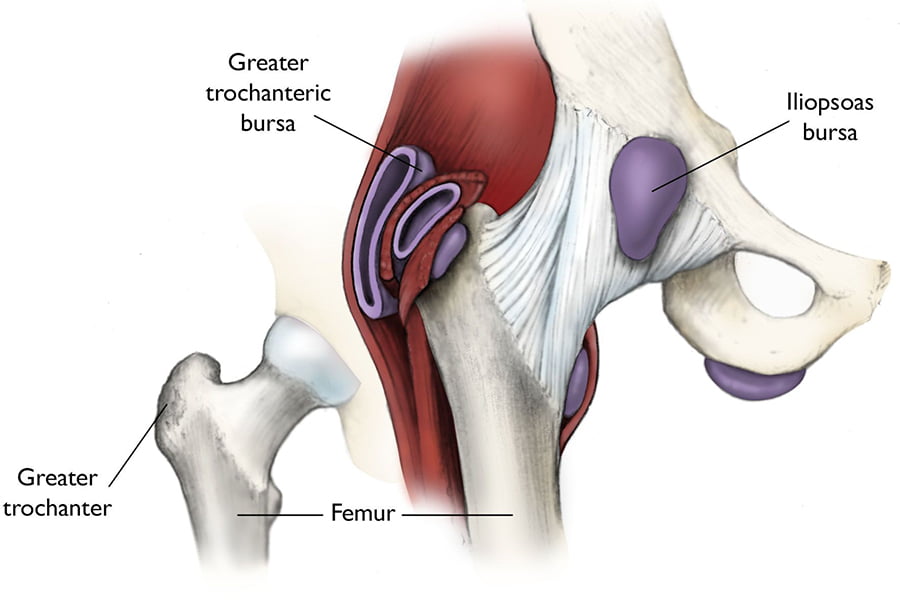
Treating trochanteric bursitis focuses on reducing the inflammation and pain. Trochanteric bursitis is an inflammation of the bursa at the point where a large tendon stretches across the bony bump on your hip known as the greater trochanter. It is the result of a buildup of friction, which can be caused by a repetitive use injury, an acute injury, a systemic condition like arthritis or an infection.
Your orthopedic surgeon can usually diagnose the condition by reviewing your medical history and conducting a physical examination. If an injection of a local anesthetic into the bursa relieves the hip pain immediately, the diagnosis is usually trochanteric bursitis. Occasionally, your doctor may order X-rays to investigate possible underlying problems with the hip itself, such as arthritis.
Doctors primarily use nonsurgical methods in treating trochanteric bursitis. Your orthopedic surgeon may inject cortisone along with the local anesthetic, in order to reduce the inflammation and relieve the pain. He or she may also prescribe additional anti-inflammatory medication. Your orthopedic surgeon may also suggest a series of exercises designed for stretching and strengthening. You may apply heat or ice to further calm the inflammation of the bursa.
Your orthopedic surgeon may also prescribe physical therapy in treating trochanteric bursitis. Your therapist will use hands-on treatment and stretching to return full range of motion for your hip. These exercises will improve strength and coordination in your buttock and hip muscles. This will enable the femur to move in the socket smoothly and can help reduce friction on the bursa. You may need a four to six week course of therapy treatments before you regain full motion and function of your hip.
In the rare event that treating trochanteric bursitis with nonsurgical methods fails, you may need surgery. The primary goal of all surgical procedures designed to treat this condition is to remove the thickened bursa, to remove any bone spurs that may have formed on the greater trochanter, and to relax the large tendon of the gluteus maximus.
For more information on this subject, call The Zehr Center for Orthopaedics at 239-596-0100 or visit www.zehrcenter.com. The information contained herein is compiled from a variety of sources. It may not be complete or timely. It does not cover all diseases, physical conditions, ailments, or treatments. The information should NOT be used in place of a visit with your healthcare provider, nor should you disregard the advice of your health care provider because of any information you read on this topic.